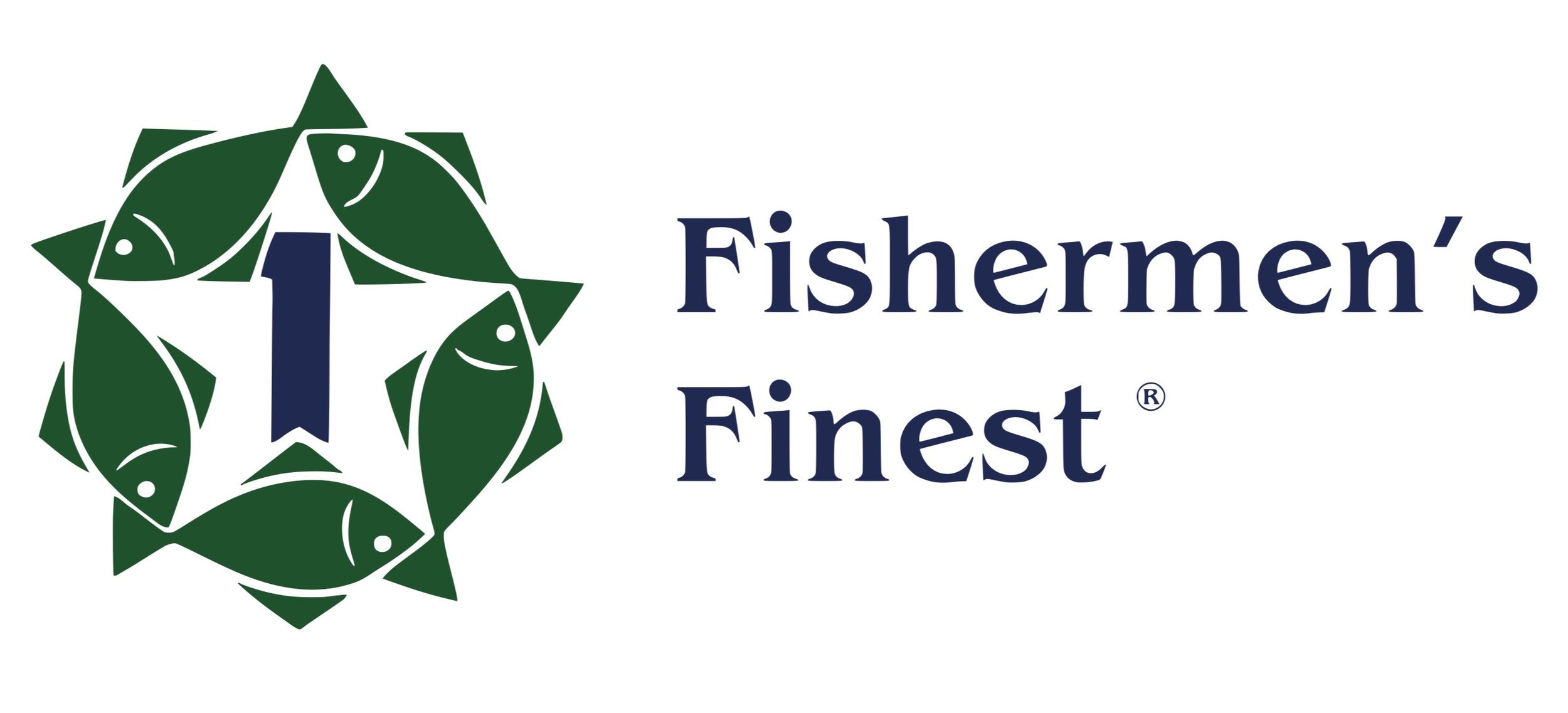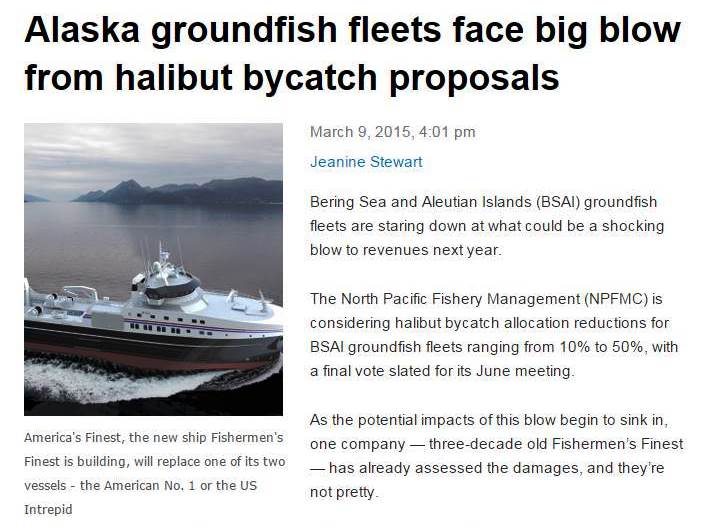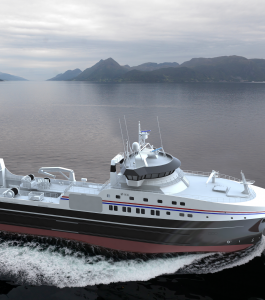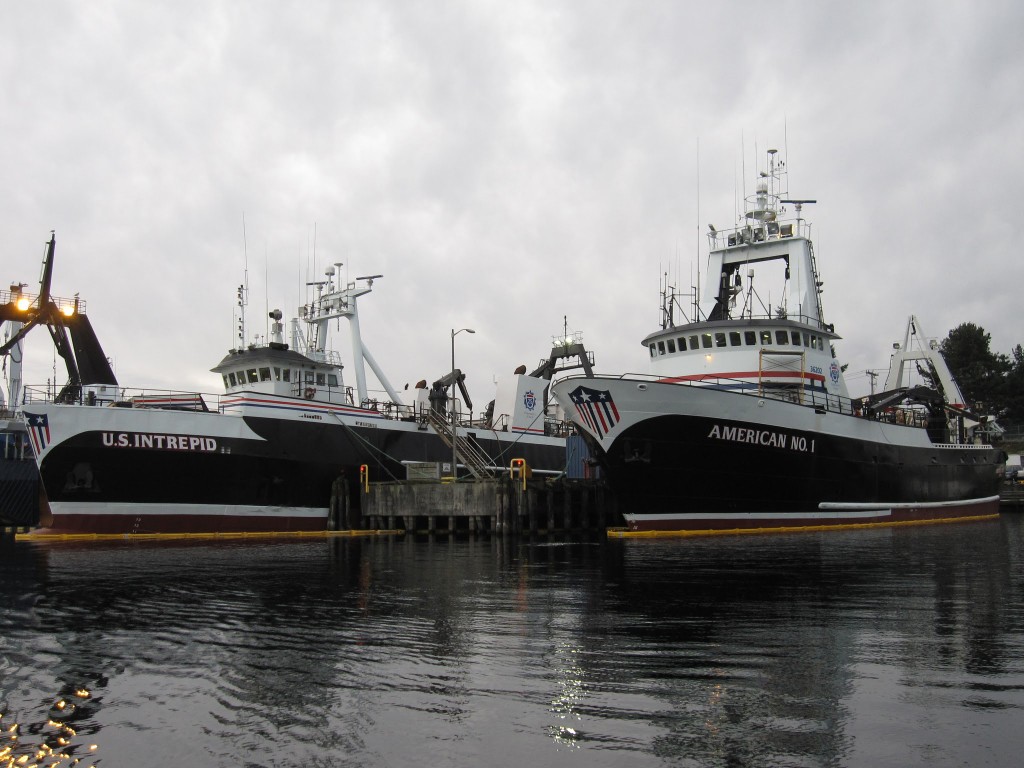Bering Sea and Aleutian Islands (BSAI) groundfish fleets are staring down at what could be a shocking blow to revenues next year.
The North Pacific Fishery Management (NPFMC) is considering halibut bycatch allocation reductions for BSAI groundfish fleets ranging from 10% to 50%, with a final vote slated for its June meeting.
As the potential impacts of this blow begin to sink in, one company — three-decade old Fishermen’s Finest— has already assessed the damages, and they’re not pretty.
The company expects the cuts to have a devastating one-to-one impact on revenue for Amendment 80 flatfish fishing operations in the Bering Sea. In other words, if the 50% halibut allocation limit went through, companies would see flatfish revenues sink by 50% on average over the course of several years. The impacts would vary based on companies’ abilities to use mitigation tools, such as finding fishing areas with less halibut.
Timing could not be worse for Fishermen’s Finest, which on Nov. 18 — just weeks before the company found out about the possible bycatch clincher — signed a contract with Dakota Creek Industries to build a modern factory trawler to replace one of its two vessels.
This would be the first vessel to be replaced in the groundfish fishery since 1988, according to company owner Helena Park, who has led the Washington state-based venture since 1986.
“This is long, long overdue,” Park told Undercurrent News on Friday. “We’re running on rust buckets and putting people's lives in danger.”
Park says, with equal disappointment, that she expects the reductions to derail her hopes to open the floodgates of development in the Amendment 80 fleet, which was a major goal of the project that she and President Dennis Moran share.
Adding to the sting for groundfish catchers, the benefits to the halibut fishery fleet do not balance out the losses to the groundfish fleet.
The Amendment 80 sector Fishermen’s Finest belongs to would lose anywhere from $10 million to $368m or more over a ten year period, according to analysis from the NPFMC’s initial draft review, dated Jan. 19.
The same analysis shows the halibut fleet would, meanwhile, gain $4m to $58m for the Amendment 80 catcher processor segment.
The possible losses to the Amendment 80 fleet could be even higher since the NPFMC upped the maximum bycatch limit reduction from 35% as of the Jan. 19 analysis to 50% at its Feb. 2-10 meeting. This also means the corresponding gains to halibut would be greater, but they would not go up by nearly as much as the losses for groundfish.
The same NPFMC analysis shows losses ranging from $10m to $145m over ten years for the BSAI trawl limited access sector, while the halibut sector stands to gain far less, with estimates at $1m to $8m or more. These too would increase when including the possible 40% to 60% reduction options added at the February meeting.
It is important to note, however, that some companies in the halibut fishery stand to lose far more than the average if reductions in the bycatch limit aren't adopted.
Jeff Kauffman’s halibut operation, for instance, may have faced closure this year due to bycatch counted in his fishing area if the IPHC had not decided to make an exception to its main harvest policy, Kauffman told Undercurrent.
The NPFMC’s Diana Evans, who authored the NPFMC’s initial draft review, notes the NPFMC is acting under management principles in its decision to consider the reductions.
“One [principle] is reducing bycatch to the extent possible,” she said, adding this is required under the Magnuson Stevens Act. “The other that is important is national standard 8, and that is to minimize the effects of federal fisheries management on fishing dependent communities.”
In preparation for its June meeting, the latter will get increased attention. Evans said the NPFMC's initial analysis focused more on losses of jobs in Alaska than those in Washington state.
"That's one of the areas we need to do a better job of explaining things better, with respect to the community impacts not just limited to Alaska," she said.
Communities outside Alaska are the ones that stand to lose out from the reductions, and considerably more than their Alaska counterparts, according to Fishermen's Finest.
"This reallocation will cause a handful of Alaska fishermen to gain an additional $44 million over the next 10 years but will cause the loss of $1.2 billion and 4,900 jobs in the Washington state fishing and shipbuilding industry," the company says in a petition it is circulating, which asks Washington state governor Jay Inslee to stop the reduction measure.
In June, the NPFMC will make its final decision after new analysis comes out. It remains to be seen whether this changes a seemingly strong level of support for reductions seen at the NPFMC's December meeting.
At that meeting, Alaska-based halibut companies testified requesting an emergency action to impose bycatch limits, outside of the normal process, on the groundfish fleets this year. The NPFMC called the request to a vote during the same meeting, and the motion failed narrowly, on a tie vote.
Disastrous timing
Fishermen's Finest has launched construction already for the 268.1 foot trawler it signed to build in November -- dubbed America's Finest -- but it fears paying for it will not be as easy if significant reductions go through.
This is, first and foremost, a blow to the company's hope to lead the way for a revitalization movement in the aging Amendment 80 fleet, Park said.
Both Park and Moran insist other Amendment 80 companies are itching to embark on such projects but want to see a sign that it is feasible.
“If we do this and we get it right, then everyone will see it’s possible,” Moran said.
The feat already has its share of challenges beyond financing. No new catcher processor has been built in the US since 1988, causing the ship-building skills and expertise in US shipbuilding yards to be lost, according to Moran. Further complicating things, the Jones Act prohibits vessels fishing in US waters from being built on foreign soil.
Fishermen's Finest plans to have foreign parts shipped in for assembly in Washington state.
As for financing, the company is using revenue from operations, savings and a loan. It has yet to determine how halibut reductions would impact the payment plans.
"There are so many factors, and we are amortizing the borrowing part over 20 years," Moran said. "And we are already committed to the contract, so we have to do it. We hope that we can manage it so we can complete the build and pay back the loan, but only time will tell. But we can say for sure that it wrecks the business model that had finally stabilized in a manner that made building new a better investment than continuing to use old ships."
The America's finest, pictured above, will replace one of the companies' two ships - either the American No. 1 or the US Intrepid, pictured below.
Legal arguments surface
Whether the NPFMC chooses to complete an environmental impact statement (EIS) could be key to the outcome, according to Moran, who sent a letter to NPFMC chairman Dan Hull and assistant regional administrator Glenn Merrill requesting one.
"NEPA [the National Environmental Policy Act] 'requires a detailed EIS for all major federal actions significantly affecting the quality of the human environment,'" Moran writes in the letter, where he also states the use of an "Environmental Assessment" -- which the NPFMC intends to rely on first rather than an EIS is "questionable at best."
Merrill responded that if the proposed action moves forward, it wold be subject to a finding of no significant impact (FONSI) or an EIS. It is first preparing a draft EA/ Regulatory Impact Review / Initial Regulatory Flexibility Analysis (EA/RIR/IRFA) for the proposal.



